“A well-designed kitchen is more than just a cooking space- it is a harmonious blend of style and functionality, where every detail invites creativity, comfort, and the joy of gathering”.
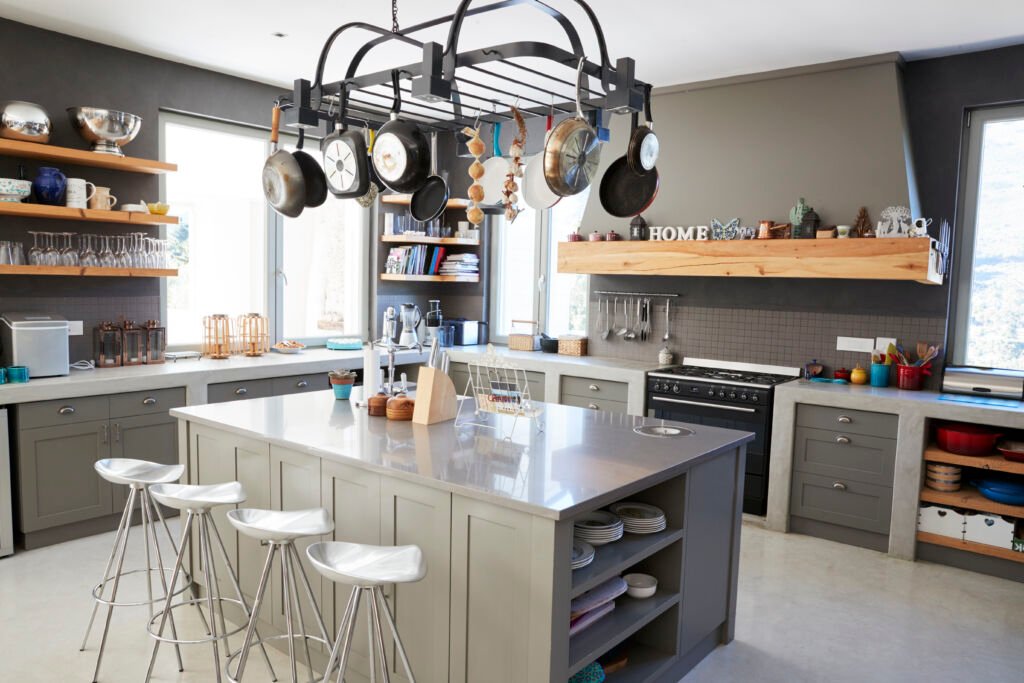
The Ultimate Guide to Kitchen Interior Design: Transform Your Space with Style
If you’ve ever felt overwhelmed by the idea of redesigning your kitchen, you’re not alone. Kitchen interior design can be a complex task, involving numerous elements from layout to lighting. However, a well-thought-out kitchen design not only enhances the functionality of one of the most used spaces in your home but also significantly boosts its aesthetic appeal. In this extensive guide, we will delve into the key aspects of kitchen interior design, providing you with practical tips, design trends, and insights to help you create a space that is both beautiful and functional.
Understanding the Fundamentals of Kitchen Interior Design
The Importance of Layout
The layout of your kitchen serves as the backbone of your design. It determines how efficiently you can work within the space and influences the overall flow and comfort. Here are some of the most popular kitchen layouts:
- L-Shape Layout: This design is highly adaptable and ideal for smaller to medium-sized kitchens. The L-shape allows for efficient use of space and can create a more open and airy feel by utilizing corners effectively.
- U-Shape Layout: Perfect for larger kitchens, this layout maximizes counter and storage space. It creates a functional work triangle, making it easier to move between the stove, sink, and refrigerator.
- Island Layout: Adding an island to your kitchen can offer additional counter space and storage. Islands can also serve as a casual dining area or a focal point for entertaining guests.
- Galley Layout: Known for its efficiency, the galley layout features two parallel countertops with a central walkway. This design is ideal for narrow kitchens and maximizes workspace.
- Open Concept Layout: Combining the kitchen with adjacent living areas can create a more inclusive and social environment. This layout is perfect for modern homes and encourages interaction between family members and guests.
When choosing a layout, consider your cooking habits, family size, and how you use the kitchen. A well-chosen layout ensures that the space is both functional and enjoyable to work in.
Selecting the Perfect Color Scheme
Color is a powerful tool in kitchen interior design. It can set the mood, influence space perception, and tie together different design elements. Here’s how to choose a color scheme that suits your style and needs:
- Neutral Tones: White, beige, and gray are classic choices that provide a clean and timeless look. Neutral colors also offer flexibility, allowing you to experiment with various accents and accessories.
- Bold Colors: For those who love vibrant spaces, bold colors can be introduced through cabinetry, backsplashes, or appliances. Colors like deep blue, emerald green, or even bright yellow can inject energy into the kitchen.
- Contrasting Colors: Combining light and dark hues can create a striking contrast. For example, dark cabinetry with light countertops can add depth and visual interest to the kitchen.
- Monochromatic Schemes: Using different shades of a single color can result in a sophisticated and cohesive design. This approach works particularly well in minimalist or modern kitchens.
Your choice of color can significantly impact the kitchen’s atmosphere, so select shades that not only match your aesthetic preferences but also enhance the functionality of the space.
Choosing the Right Materials
Materials play a crucial role in both the appearance and durability of your kitchen. Here are some popular options to consider:
- Countertops: Granite, quartz, and marble are luxurious and durable choices for countertops. Granite and quartz are low-maintenance and resistant to scratches and stains, while marble offers a unique, elegant look. For a more budget-friendly option, consider laminate countertops, which come in a wide variety of styles and colors.
- Cabinets: Solid wood cabinets are a traditional choice, known for their durability and timeless appeal. For a more contemporary look, MDF (Medium Density Fiberboard) cabinets can be painted or finished to match any style. Consider the finish and hardware to complete the look.
- Backsplashes: The backsplash is a focal point that can add character to your kitchen. Subway tiles, glass mosaics, and natural stone are popular options. Choose a backsplash that complements your countertops and cabinetry while adding visual interest.
- Flooring: Kitchen flooring should be durable and easy to clean. Ceramic tiles, hardwood, and vinyl are all excellent choices. Each has its benefits, from the warmth and classic appeal of hardwood to the low-maintenance properties of vinyl.
When selecting materials, consider not only their visual appeal but also their practicality and how they fit into your overall design.
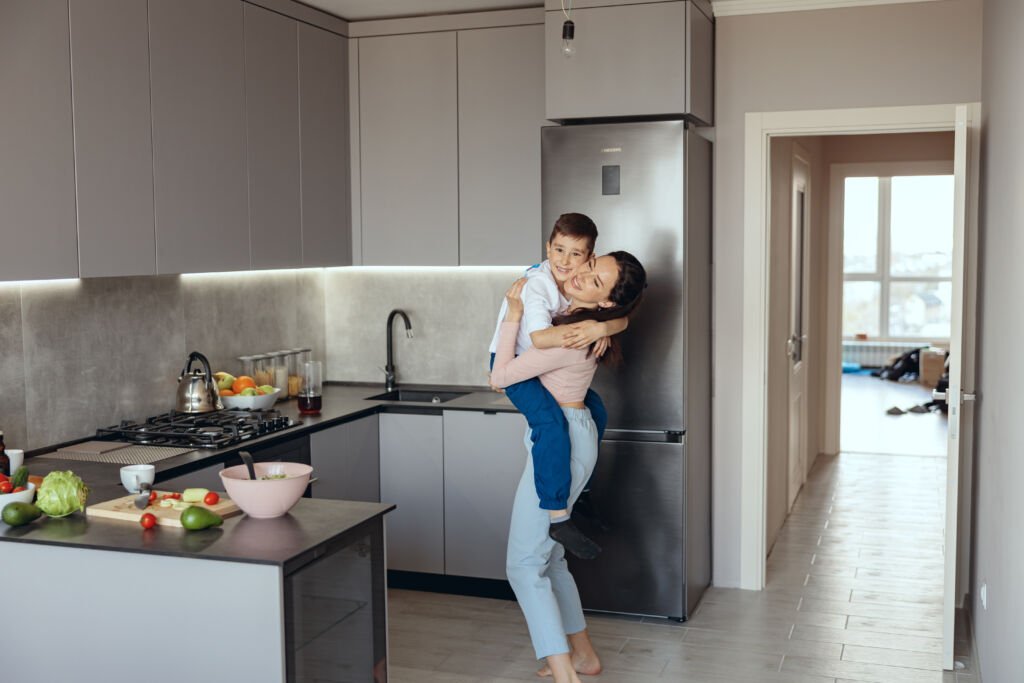
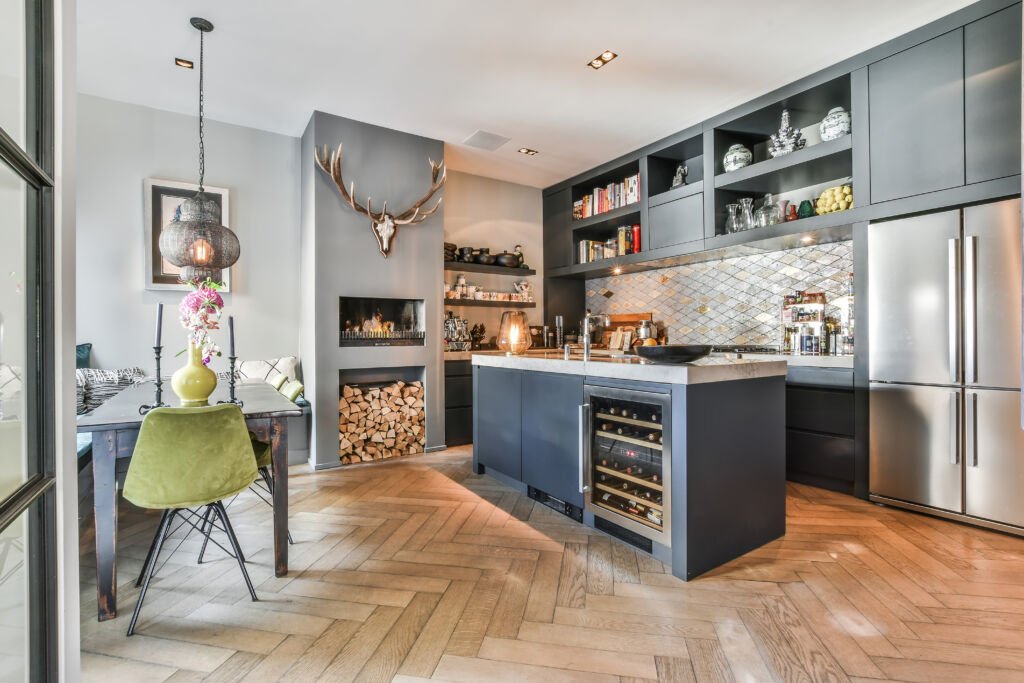
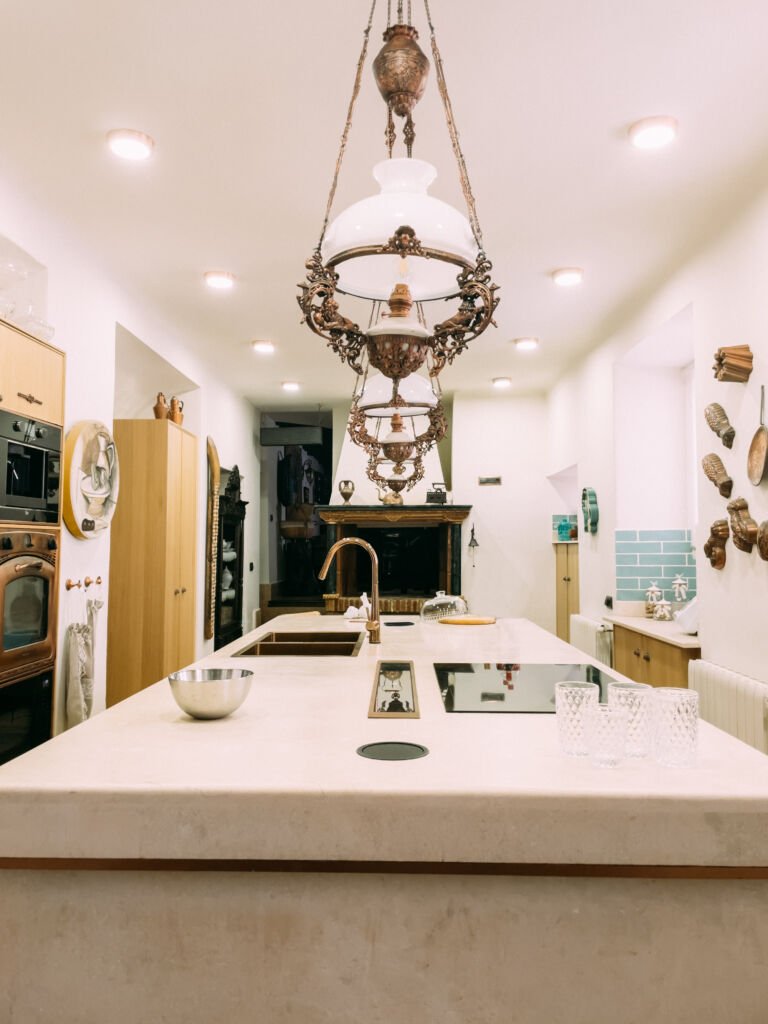
Importance of Lighting in Kitchen Design
Lighting is a vital aspect of kitchen interior design. It affects both the functionality and ambiance of the space. Here’s how to create an effective lighting plan:
- Task Lighting: Focused lighting is essential for work areas such as countertops and cooking zones. Under-cabinet lights and pendant lights over islands are excellent for illuminating these areas.
- Ambient Lighting: This provides overall illumination for the kitchen. Recessed lighting, ceiling fixtures, or chandeliers can enhance the room’s brightness and ensure that the space is well-lit.
- Accent lighting: Use accent lighting to highlight architectural features or decorative elements. LED strips under cabinets or inside glass-front cabinets can create a warm, inviting glow.
- Natural Light: Maximizing natural light can improve the kitchen’s ambiance and reduce reliance on artificial lighting. Consider installing large windows or skylights to enhance daylight exposure.
By incorporating different types of lighting, you can create a versatile and aesthetically pleasing kitchen environment.
Incorporating Functional Storage Solutions
Effective storage is essential for maintaining an organized and efficient kitchen. Here are some smart storage solutions to consider:
- Pull-Out Shelves: These shelves make it easy to access items stored in deep cabinets. They help eliminate clutter and improve organization.
- Lazy Susans: Ideal for corner cabinets, lazy Susans allow you to access items that are often difficult to reach. They’re perfect for storing pantry items or kitchen essentials.
- Drawer Dividers: Keep utensils, cutlery, and kitchen tools neatly organized with adjustable drawer dividers. This prevents clutter and makes it easier to find what you need.
- Pantry Solutions: Incorporate shelving, pull-out racks, or even a walk-in pantry to store dry goods, canned items, and kitchen supplies.
Effective storage solutions not only keep your kitchen organized but also enhance its overall functionality.
Personalizing Your Kitchen Space
Adding personal touches to your kitchen can make it feel more like home. Here are some ideas to personalize your space:
- Custom Backsplashes: Design a backsplash that reflects your personality, whether through unique patterns or custom mosaics. This can add a personal touch and serve as a focal point.
- Decorative Accessories: Incorporate elements such as stylish vases, cutting boards, or decorative bowls. These items can enhance the kitchen’s visual appeal and provide a touch of individuality.
- Open Shelving: Display your favorite dishes, collectibles, or cookbooks on open shelves. This not only adds character but also allows you to showcase your personal style.
Personalizing your kitchen ensures that the space reflects your tastes and preferences, making it a more enjoyable place to spend time.
Embracing Sustainable Practices
Sustainability is becoming an important consideration in interior design. Incorporate eco-friendly practices into your kitchen design with these tips:
- Energy-Efficient Appliances: Choose appliances with Energy Star ratings to reduce energy consumption and lower your utility bills. Energy-efficient models are designed to perform well while minimizing environmental impact.
- Recycled Materials: Opt for countertops, cabinetry, or flooring made from recycled materials. This reduces the environmental impact and can add a unique touch to your kitchen design.
- Water-Saving Fixtures: Install faucets and fixtures designed to conserve water. These fixtures help reduce water usage without compromising performance.
Embracing sustainable practices not only benefits the environment but also creates a healthier living space.
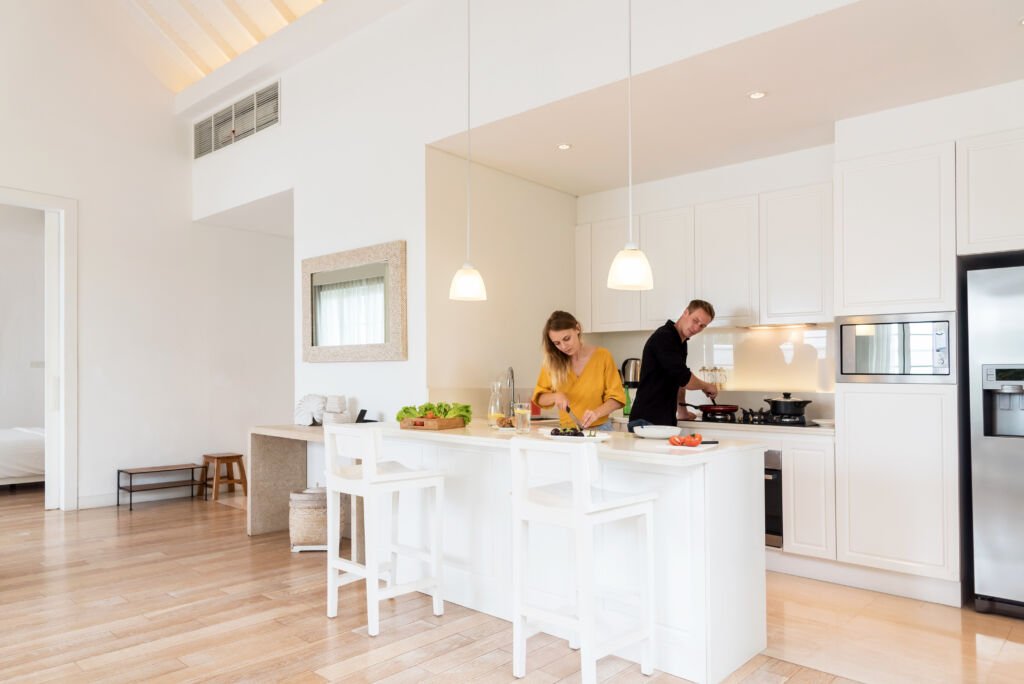
Planning for Future Needs
When designing your kitchen, consider how your needs may change in the future. Here are some strategies to plan for future requirements:
- Flexible Layouts: Choose layouts that can adapt to different uses. For example, incorporating movable islands or adjustable shelving can accommodate changes in your lifestyle or family size.
- Expandable Storage: Include options for expanding storage as needed. Modular cabinetry or adjustable shelving allows for easy updates as your needs evolve.
Planning for future needs ensures that your kitchen remains functional and relevant as your lifestyle changes.
Integrating Modern Design Trends
Staying updated with current design trends can enhance the appeal of your kitchen. Here are some popular trends to consider:
- Smart Technology: Incorporate smart appliances and technology to streamline kitchen tasks. Features like smart refrigerators, touchless faucets, and voice-activated lighting can add convenience and modernity to your space.
- Minimalist Designs: Emphasize clean lines and simple forms for a minimalist look. This design trend focuses on functionality and eliminates unnecessary clutter, creating a sleek and contemporary kitchen.
- Open Shelving: Open shelving continues to be popular, offering a way to display stylish kitchenware and create a more open feel. Pair it with closed cabinetry for a balanced approach.
Incorporating modern design trends can keep your kitchen looking fresh and up-to-date, ensuring it remains a stylish and functional space.
Conclusion
Designing a kitchen involves a delicate balance between aesthetics and practicality. By carefully considering the layout, color scheme, materials, lighting, storage solutions, personalization, sustainability, and future needs, you can create a kitchen that is both beautiful and functional. Embrace current design trends and incorporate modern technology to enhance your space further.
Remember, your kitchen is more than just a place to cook—it’s a central hub for family gatherings, entertaining guests, and daily activities. With thoughtful design, your kitchen can become a space that you not only enjoy but also take pride in.https://seahawkarchplanners.com/

